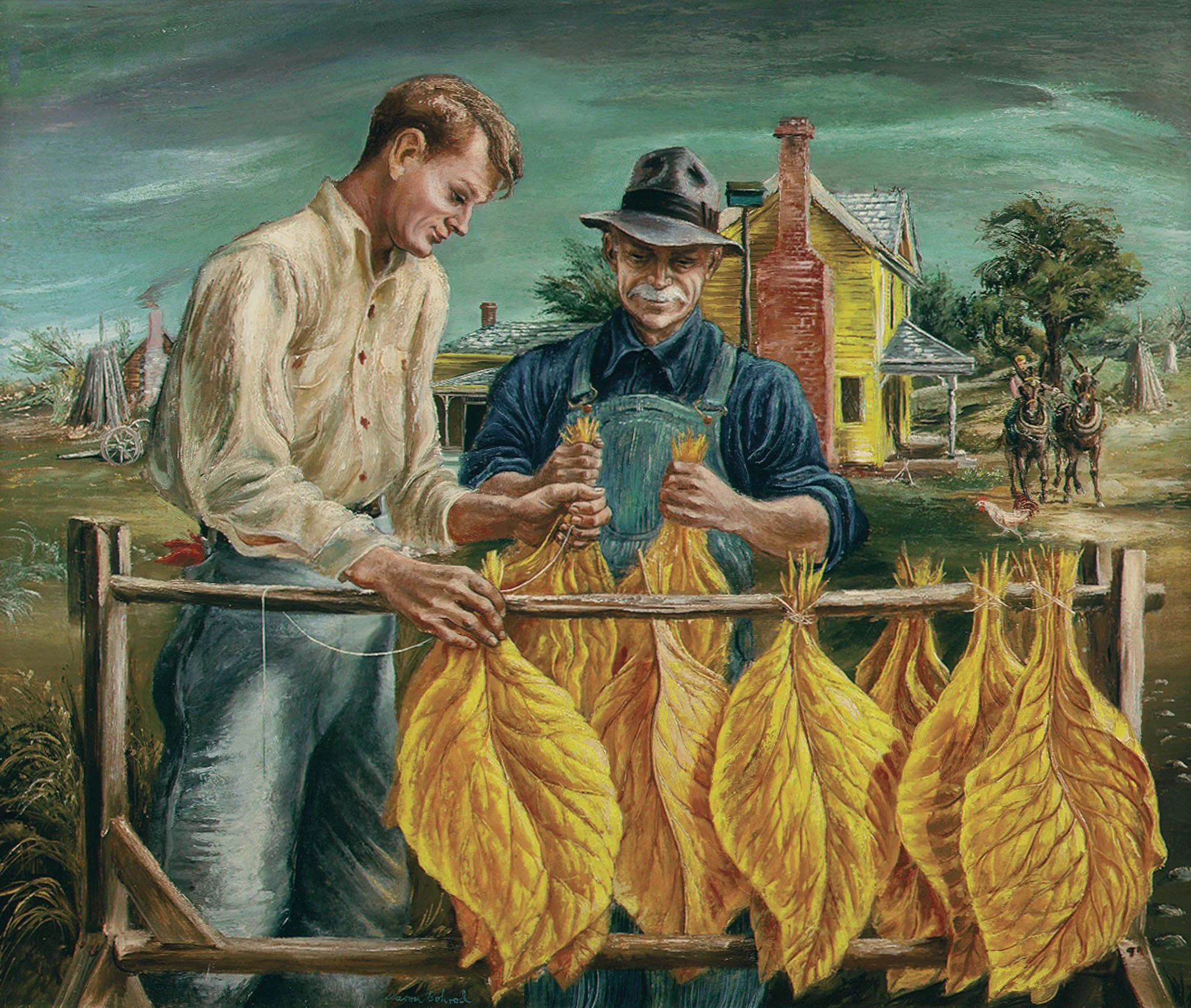AARON BOHROD (1907-1992)
Available Work | Biography
Biography • Aaron Bohrod (1907-1992)
Aaron Bohrod was born in Chicago in 1907. His formal art education began with children's classes at the Art Institute of Chicago, followed in 1925-26 at the Crane College and then in 1926 to 1928 with study at the Art Institute of Chicago School of Art. He then went on to the Art Students League of New York in 1929, where he studied with such outstanding teachers as John Sloan, Kenneth Hayes Miller and Boardman Robinson.
While studying at the League, Bohrod was advised by his teacher John Sloan to return to Chicago and paint his surroundings. He followed this advice and returned to depict the everyday life and landscape of the metropolis of the Midwest in 1930. Equipped with pencils and sketchbooks, he haunted the streets and back alleys of the city. The sketches he produced would provide ample material for the full scale paintings he would later produce in his goal to do for Chicago what John Sloan had done for New York. Upon his return to Chicago Bohrod entered the Depression-inspired Grant Park exhibitions, which were held across from the Art Institute. He sold many sketches at two dollars each, and framed watercolors for five dollars, which was not an insubstantial amount during the Depression years.
Aaron Bohrod returned to New York for further work at the Art Students League from 1931 to 1932. In 1934 Aaron Bohrod became a Rehn Gallery artist in 1934 and remained with Rehn who immediately gave Bohrod one-man shows, which were critically acclaimed, but financially unsuccessful. Salvation came, however, with the award of a Guggenheim fellowship in 1936, for which he was recommended by Alexander Brook, Reginald Marsh, Edward Hopper, and Eugene Speicher. This Guggenheim funded trip was to the West and when his Guggenheim fellowship was renewed in 1937, Bohrod used the second grant to visit the South and North-East.
In 1939 Bohrod was accepted into the Associated American Artists group, whose membership included such luminaries as Grant Wood, John Steuart Curry, Thomas Hart Benton, Raphael Soyer, Paul Sample, and George Grosz. From 1940 to 1942, the American Tobacco Company commissioned Bohrod, along with artists Ernest Fiene, Thomas Hart Benton, Doris Lee, Frederick Taubes, and George Schreiber, to paint images of tobacco production in all its phases: from planting to harvest to curing and auction. Unstringing Tobacco is one of these paintings used to decorate the company's headquarters and also in its advertisements. The American Tobacco Company described the commission as "a series of paintings of the tobacco country by America's foremost artists." The last of the commissioned paintings arrived at American Tobacco in 1945.
In 1941 Bohrod accepted the post of artist-in-residence at Southern Illinois University. His tenure there was interrupted in 1942 by World War II, during which he served as an artist for the U.S. Army Corps of Engineers in the Pacific Theatre, and then as an artist-correspondent for Life magazine in Europe until 1944. In 1946 the eminent Regionalist John Steuart Curry died, leaving open the post of artist-in-residence at the University of Wisconsin at Madison. Through the recommendation of Grant Wood, Aaron Bohrod succeeded Curry. He remained at this post from 1948 until his retirement in 1973. Settling in Madison in 1948, Bohrod began documenting rural Wisconsin and both urban and small-town life of the industrial Great Lakes. This unique painted record of the upper Mid-West was possible because Bohrod's primary responsibility at the University involved traveling throughout the state of Wisconsin to provide encouragement to artists attached to the University's Rural Arts Outreach program. As Bohrod remained at his post until 1973 his art provides a considerable record of one area.
Beginning in 1950 until 1958 Aaron Bohrod worked with F. Carlton Ball intermittently at the University of Wisconsin and at the Southern Illinois University at Carbondale on pottery design and decoration. Later in his life in 1982 to 1989 Bohrod returned to executing some pottery decoration. From 1954 to the time of his death Bohrod focused on trompe l'oeil painting and gained further recognition as a still life painter. Active as an artist until the 1990s Aaron Bohrod died in Madison, Wisconsin in 1992. His work can be found in many public collections including those of the Whitney Museum of American Art; the Metropolitan Museum of Art; the Library of Congress; the Phoenix Art Museum; the Detroit Institute of Arts; the Hirshhorn Museum and Sculpture Garden; and the Museum of Fine Arts, Boston.

